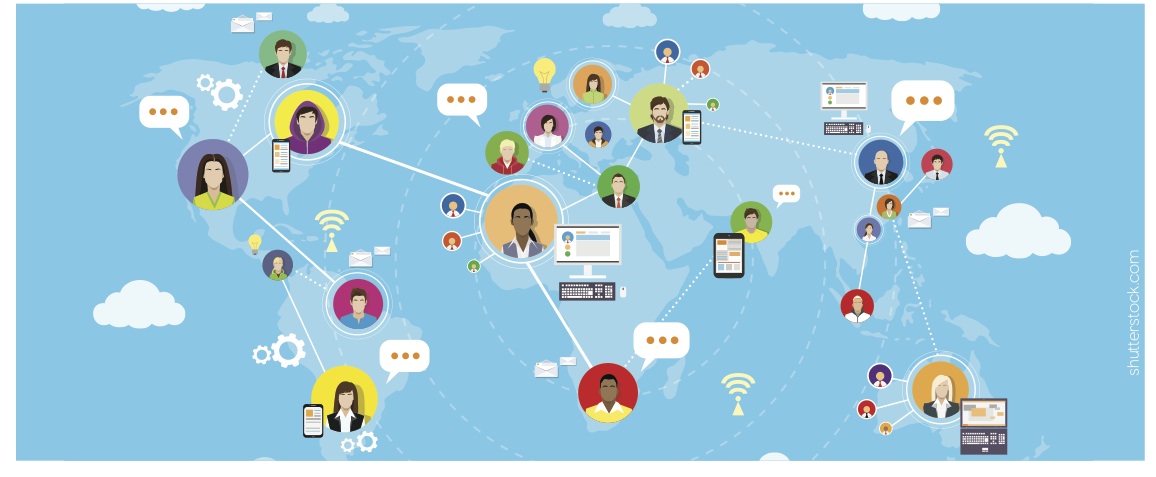“It can’t be done in this country.” When it comes to patient engagement on an international scale, these words are sometimes uttered with such absolute conviction, you’d almost think it’s true. It never is though. It’s very satisfying to see international patient engagement programs come to fruition and see patients find their voice and share their story around the globe—especially when we had to overcome initial apprehension and resistance. The reason why the leap of faith always pays off is that the basic principles are universal: First, people living with serious health challenges seek connections with one another. Everywhere. You want to hear from someone who has been there before you. You want to know you’re not the only one having to deal with this. Second, storytelling is the most effective form of communication. Everywhere. Authentic stories that get us emotionally involved transcend nations, race, gender, language, and cultural backgrounds. Nothing brings us together as humans like stories.
One thing is true, of course: Cultural codes and regulatory “rules of patient engagement” do change as you travel across this planet. That’s why biopharma companies who work cross-border choose a partner that has the experience and resources to talk to patients in their language and on their terms. On top of that, such a partner must also have an intimate understanding of the local legal and regulatory environment and be well connected within the patient community, which is only possible if there are extensive research and outreach capabilities available.
Working globally also forces all involved to reevaluate their stereotypes. For instance, I was warned not to be “brash” when I prepared for a patient meeting in Japan (brash, me!). At the same time I thought it would be a particularly hard job to get the Japanese to open up about their emotions and share their true experiences in dealing with disease. If we help them find their voice and share their story, will they be prepared to come out of their shell? My worries were completely unfounded. Thinking of the amount of boxed-up and released emotion, and the gratitude that ensued, fills me with the greatest joy to this day. Similar things happened to members of my team in other countries in Asia, Latin America, Australia, and Europe: It started with uncertainty and ended with the deepest mutual appreciation by all involved. It taught me that awareness of differences is a better guide than fear, and that with openness and curiosity, much more can be achieved than with apprehension.
Pharma’s Universal Threats and Challenges
The larger point here is that biopharma should offer patients a channel to help one another, a platform to provide feedback to drugmakers, a way to learn strategies for a self-determined life—that’s just simply the right thing to do. No matter where you are, it’s best business practice. Of course the regulatory guardrails around patient engagement vary from country to country, but no country in the world has legislated for a total ban on patient engagement for biopharmaceutical companies. Why would they, anyway? At the end of the day, it’s in the public interest for patients to be empowered and become more competent at managing life with their disease. Just as important: It’s in the industry’s interest. Reputation matters, and companies that enjoy a solid relationship with the communities they serve have a much easier time facing the threats that every biopharma company inevitably has to deal with: Debates about efficacy and safety, approvals, pricing, and access, as well as non-industry-specific challenges like recruitment, collaborations, and joint ventures. Such challenges aren’t much different from one jurisdiction to another. They too are universal.
All countries have their own legal and regulatory parameters, some further influenced by international bodies like the EMA, so a solid understanding of the local ground rules is critical. Patient engagement looks different everywhere, not just because of regulations, but also because people have different cultural values and expectations. That’s why local affiliates are so important: They know the local regulatory and cultural ground rules and help navigate pharma through the local marketplace. In terms of cultural nuance, one important dimension is the degree of contextual communication that is required to collaborate effectively.
In all cultures, it is necessary to build a minimum of rapport between two people before any actual work can be done. In some cases, it’s enough to say “hi” for low-risk transactions such as buying an everyday item in the supermarket, or to introduce yourself by name for more long-term commitments, such as starting a new job. In other cultures, however, it would be considered rude to shop without a steady stream of friendly chitchat and impossible to start working together without talking about your professional and family background, as well as your hobbies and interests. Patient engagement for the biopharma industry is not isolated from these cultural requirements: You must use a more direct or a more indirect communication style depending on whom you’re trying to engage with.
Respect, Not Pretense
While it is important to be cognizant of the things that make each market distinct, we must also not lose sight of the things that are universal. For instance, being respectful is always important, even if you may not be perfectly familiar with the local cultural codes. If you’re not entirely sure about local habits and customs, it’s okay to ask. You don’t have to pretend to be someone you’re not—or to have another background than you do. The same respect you give others, they should give you too, so don’t hide your identity. With qualified people and some good will, language barriers are not that hard to overcome, as long as we allow for enough time and have the patience to build rapport and understanding. What you should also pack for your overseas trip: A thick skin and a sense of humor.
Pharmaceuticals, as an industry, is about as global as it gets: We go to the four corners of the world to find new compounds that could be the answer to some of our health concerns. We find candidates of molecules in tropical jungles and polar oceans. International teams around the globe investigate the human DNA to look for further clues and imitate naturally observed processes to use them for human medical needs. That’s just the research side of things, and it’s mirrored on the demand side: The benefits of medicine are sought-after the world over. Yes, government directives in hundreds of discrete jurisdictions, as well as cultural differences, make it impossible to use a uniform approach to engaging with HCPs and patients. But just because we can’t apply the same blueprint all over doesn’t mean we should let important opportunities slip. The effort of customizing is worth it—and can enrich lives as much as business.







